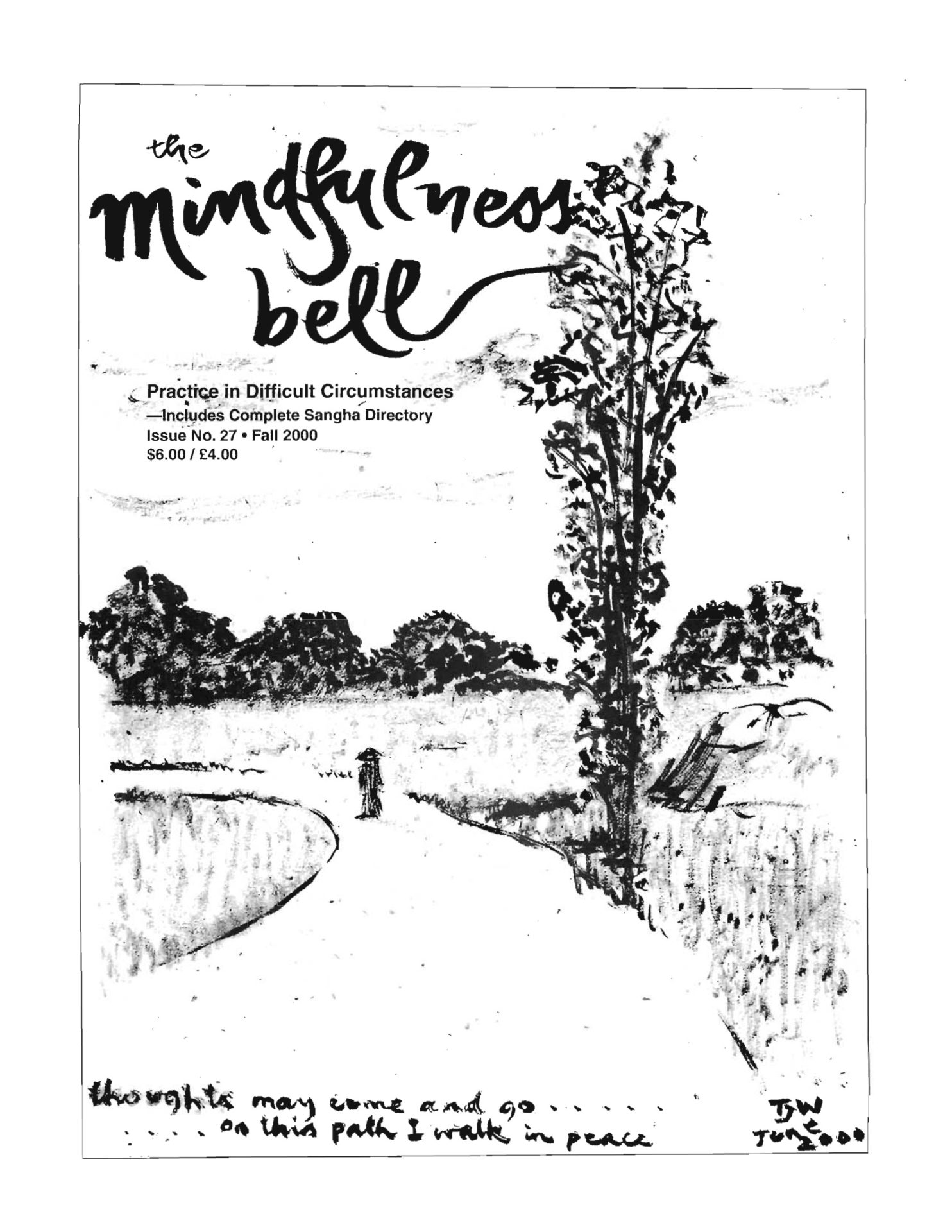Our dear Thay has done his very best over many years, transmitting the Buddha Eyes to us. The June retreat in Plum Village was a profound experience of this continued Buddha Eyes transmission. We learned of many types of eyes—Heavenly Eyes, Wisdom Eyes, Dharma Eyes, Sangha Eyes, and Buddha Eyes. The beginning of our retreat was spent developing our Sangha Eyes. Sangha Eyes call us beyond our ego eyes, which would have us believe we are substantially separate selves, with individual sensibilities and destinies, concerned only with what matters to us.
Our dear Thay has done his very best over many years, transmitting the Buddha Eyes to us. The June retreat in Plum Village was a profound experience of this continued Buddha Eyes transmission. We learned of many types of eyes—Heavenly Eyes, Wisdom Eyes, Dharma Eyes, Sangha Eyes, and Buddha Eyes. The beginning of our retreat was spent developing our Sangha Eyes. Sangha Eyes call us beyond our ego eyes, which would have us believe we are substantially separate selves, with individual sensibilities and destinies, concerned only with what matters to us.
During the retreat, we touched the suchness of Sangha, and it healed our pain and transformed the fear in us. The more we were able to surrender to Sangha energy, the more joy we found in each breath and each step. We realized that the practice of the Sangha is the practice of deep interbeing or emptiness. Touching true emptiness, we reclaimed our solidity and freedom and our Buddha Eyes grew bright.
Buddha Eyes allow us to look deeply into the wonders of life, and as we touch these wonders, our peace and happiness are restored. But Buddha Eyes also allow us to see and touch the Sangha everywhere, within us and around us. It is said that upon awakening, the Buddha could see 48,000 beings in a cup of water. Buddha Eyes give us the gift of courage to come home to the present moment and see reality as it is, in its connectedness and wholeness. Buddha Eyes made our Dharma Eyes shine with the light of mindfulness. As the Dharma rain of the retreat fell on us, our understanding of the Four Noble Truths came, like the full moon into the darkness of our times. We dared to look into ourselves and into our new millennium, and we saw alienation, violence, and fear at the root of suffering.
After the retreat, I added a new daily practice. After sitting and walking meditation, I now read our local newspaper, noticing stories of suffering, alienation, violence, and fear. I have found that my heart and mind are open to new levels of identification, loving kindness, and compassion. We learn to practice the Noble Truth of suffering not for its own sake, but to find ways out of suffering. Thay charged us to practice this way during our retreat. We met in Dharma Discussion groups on education, health, and business, non-profit, youth, and others, in order to bring the Four Noble Truth to life.
With Buddha Eyes, we also saw clearly the great temptations of our millennium. We are tempted to believe that genetic and electronic invention and manipulation are our way out of suffering. While genetic manipulation promises new health and longer life spans, it also carries the shadow of seeking perfection disconnected from the reality of Interbeing, and from the causes and conditions that are a powerful part of who we are and who we become. Through insights into the ten realms, we realized that there is no genetic escape from the totality of our store consciousness, which contains all the seeds, both positive and negative, found in the depths of our cells.
Our only hope is to create causes and conditions that water our positive seeds until they bloom as beautiful flowers, and to wrap our negative seeds within the arms of loving kindness until they fall asleep. The conditions that support healing and transformation must be created within us, in our Sanghas, and in our societies.
To transform and heal our alienation, violence, and fear, Thay encouraged us to create lay residential practice communities. He said that there are not enough monks and nuns, or enough time to provide the refuge needed to create the conditions for the healing and transformation of our suffering. Lay residential centers are crucial to transmit the field of energy, environment of safety, and presence of Dharma and Sangha that our times so desperately need. With our monastic centers, locals Sanghas, Mindfulness Practice Centers, and lay residential centers, we have a powerful way out of our suffering.
I am grateful for the Eyes of the Buddha retreat. I am grateful for the monks and nuns of Plum Village whose efforts made it possible. I am grateful for our dear teacher and his unselfish transmission of the Buddha Eyes.
Larry Ward, True Great Voice, heads Community of Mindful Living and Parallax Press in Berkeley, California. He practices with the Stillwater Sangha in Santa Barbara, California, whose members have begun to look for property to establish a residential lay practice community.

